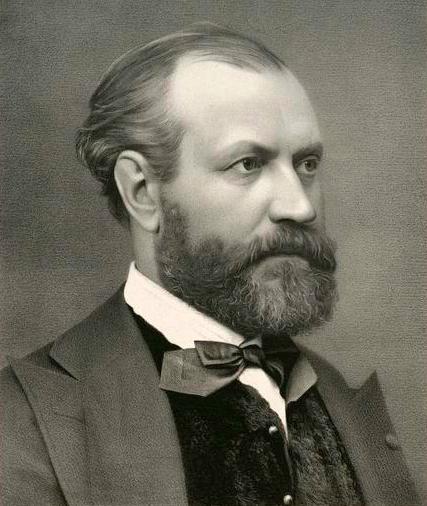|
||
|
Charles Gounod (1818 – 1893) was born in Paris into a successful artistic family. His father had won the Prix de Rome in painting in 1783, and his mother was a talented pianist. He was initially taught music by his mother, and later he studied at the Paris Conservatoire. Following his father's example, he won the Prix de Rome in 1839 with his cantata Fernand, and the prize was a bursary to study in Rome for two years. There he studied Palestrina and other composers of sacred works from the sixteenth century, avoiding the theatrical works of Donizetti and Bellini which he found lacking in musical content. He also met Fanny Hensel (neé Mendelssohn) who interested him in German music. Later, in Berlin, Fanny introduced him to her brother Felix who greeted him with the words "Oh! It's you, the madman my sister spoke to me about". They became great friends, and Felix encouraged him to study the works of J S Bach, and to write symphonies. While still in Rome he seriously contemplated joining the priesthood, and for a while composed many sacred works. In 1843 he became the musical director of the Church of Foreign Missions in Paris, and from 1847 referred to himself as "l'Abbe Gounod". However he began to realise that to make his name famous he must write for the theatre. He did indeed finally achieve fame through his opera Faust (1859) which has become one of the most regularly performed operas of all time. It has received more than 2000 performances at the Paris Opera. His two symphonies were written in 1855. The first inspired his young pupil, George Bizet, to write his own symphony in C in the same year. Gounod's symphonies are full of joie de vivre, and follow a classical model. Mendelssohn is usually cited as the strongest influence, but distant echoes of Schubert, Beethoven and Haydn can also be heard. The first symphony is particularly vivacious. Its first movement flows along with a charming grace and elegance. It is in sonata form, with three musical ideas which are treated with inventive development. The second movement has a more humorous character, with a light bouncing theme in the minor mode, contrasted by a central fugal section. The third movement is a scherzo and trio, with a teasingly playful subject, perhaps a distant reference to Haydn. The final movement has a short slow introduction, before the drive and energy of the first movement returns, amplified by dramatic interludes for the trumpets and drums. Gounod died at his family home in Saint-Cloud in 1893, shortly after completing a requiem for one of his grandchildren. His funeral took place ten days later at the Church of the Madeleine, with Camille Saint-Saëns playing the organ and Gabriel Fauré conducting. He was buried at the Cimetière d'Auteuil in Paris. Gounod's first symphony was performed by the Portobello orchestra on the 6th July 2019, conducted by Sam Jones. back |

